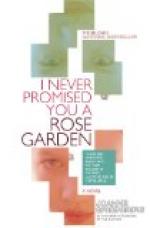The rabbit-foot clover takes kindly to the sandy soil, and, as it flowers from late May well into September, and holds its little furry tails like autumn pussy-willows until freezing weather, makes a very interesting sort of bed all by itself, and massed close to it, as if recognizing the family relationship, is the little creeping bush clover with its purplish flowers.
Next, set thickly in a mass representing a stout bush, comes the fleshy beach pea with rosy purple flowers. When it straggles along according to its sweet will, it has a poor and weedy look, but massed so that the somewhat difficult colour is concentrated, it is very decorative, and it serves as a trellis for the trailing wild bean, a sand lover that has a longer flowering season.
A patch of a light lustrous purple, on closer view, proves to be a mass of the feathered spikes of blazing star or colic-root, first cousin of the gay-feather of the West, that sometimes grows six feet high and has been welcomed to our gardens.
On the opposite side of the beach-plum alley, the Bradfords have made preparations for autumn glory, such as we always drive down to the marsh lands from Oaklands not only to see but to gather and take home. Masses of the fleshy tufted seaside goldenrod, now just beginning to throw up its stout flowerstalks, flank a bed of wild asters twenty feet across. Here are gathered all the asters that either love or will tolerate dry soil, a certain bid for their favour having been made by mixing several barrels of stiff loam with the top sand, as an encouragement until the roots find the hospitable mixture below.
The late purple aster (patens) with its broad clasping leaves, the smooth aster (laevis) with its violet-blue flowers, are making good bushes and preparing for the pageant. Here is the stiff white-heath aster, the familiar Michaelmas daisy, that is so completely covered with snowy flowers that the foliage is obliterated, and proves its hold upon the affections by its long string of names,—frostweed, white rosemary, and farewell summer being among them,—and also the white-wreath aster, with the flowers ranged garland-wise among the rigid leaves, and the stiff little savory-leaved aster or sand starwort with pale violet rays. Forming a broad, irregular border about the asters are stout dwarf bushes of the common wild rose (humilis), that bears its deep pink flowers in late spring and early summer and then wears large round hips that change slowly from green to deep glowing red, in time to make a frame of coral beads for the asters.




